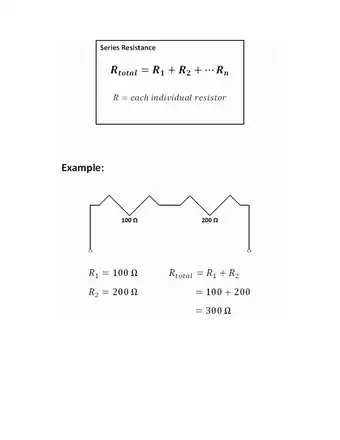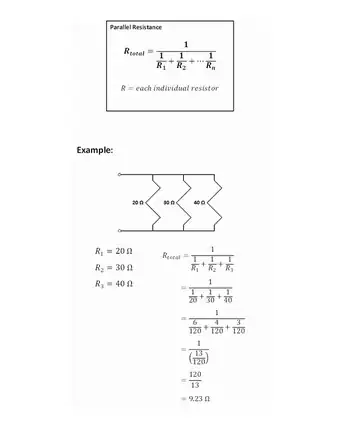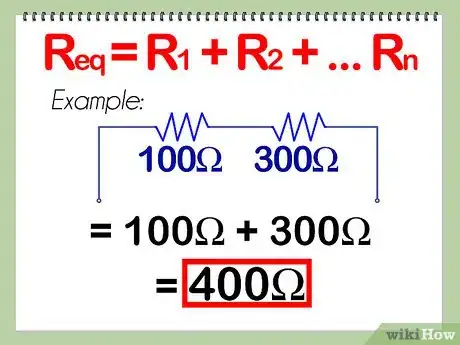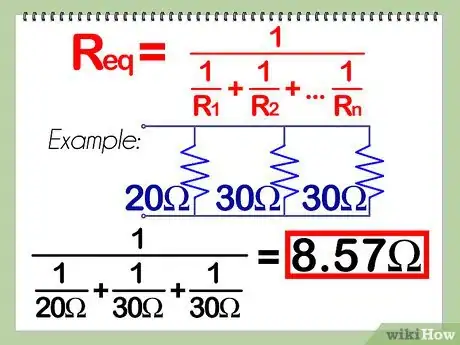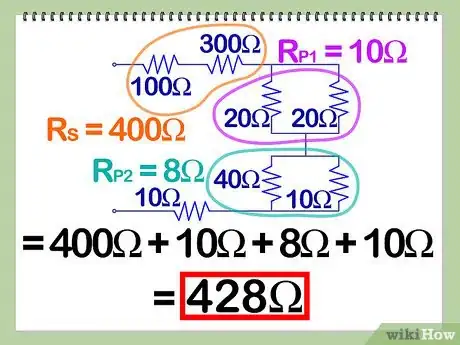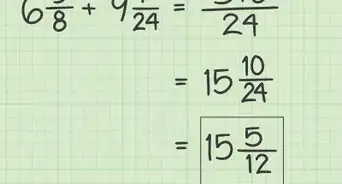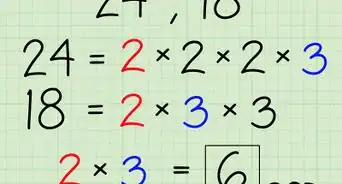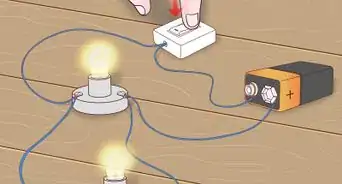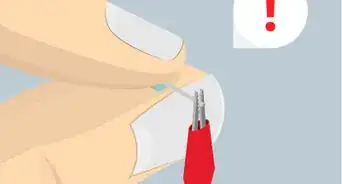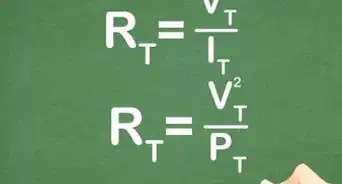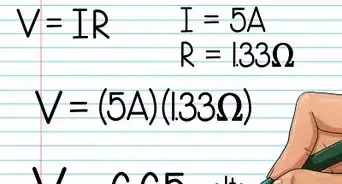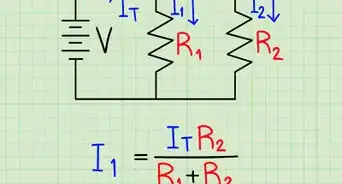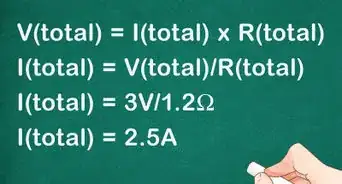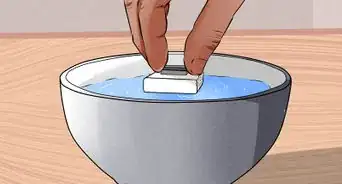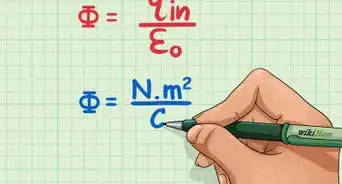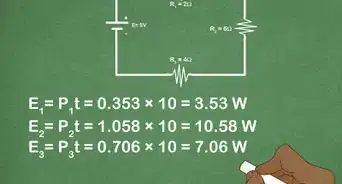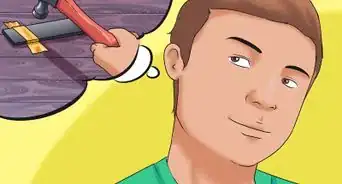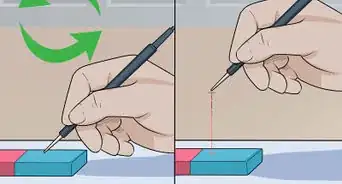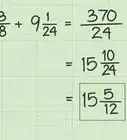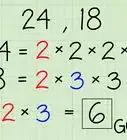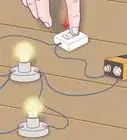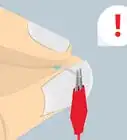This article was co-authored by Mantas Silvanavicius. Mantas Silvanavicius is a Licensed Electrician and the Owner of M+S Electric based in Las Vegas, Nevada. With more than 20 years of experience, he specializes in home electrical installations, testing, and wiring. Mantas and his team have completed projects for companies such as Seiko and Springhill Suites by Marriott. M+S Electric is licensed, bonded, and insured.
There are 7 references cited in this article, which can be found at the bottom of the page.
This article has been viewed 1,468,673 times.
Need to know how to calculate series resistance, parallel resistance, and a combined series and parallel network? If you don't want to fry your circuit board, you do! This article will show you how in just a few easy steps. Before reading this, please understand that resistors do not actually have an "inside" and an "outside" to them. The use of "in" and "out" is merely a figure of speech to help novices understand the wiring concepts.
Steps
Help Calculating Resistance
Community Q&A
-
QuestionHow do I calculate the supply current?
 Community AnswerYou divide your total voltage by total resistance. For example let's say your voltage is 200V and your total resistance is 25 ohm, so it's IT=VT/ RT=200/25 = 8A.
Community AnswerYou divide your total voltage by total resistance. For example let's say your voltage is 200V and your total resistance is 25 ohm, so it's IT=VT/ RT=200/25 = 8A. -
QuestionHow do I connect a resistor to get the minimum resistance?
 Community AnswerNet resistance is minimum when all the resistors are connected in parallel.
Community AnswerNet resistance is minimum when all the resistors are connected in parallel. -
QuestionHow do I find the equivalent resistance between A and B arranged in a triangle?
 Community AnswerSuppose A and B are the extremities of the base of the triangle. The resistor (R 1) between A and B would be parallel with the equivalent resistance of the other two, which are essentially in series. Then, R 2 and R 3 have an equivalent resistance: RE = R 2 + R 3. RE and R 1 are parallel, therefore the equivalent resistance is the reciprocal of the sum of the reciprocals of RE and R 1.
Community AnswerSuppose A and B are the extremities of the base of the triangle. The resistor (R 1) between A and B would be parallel with the equivalent resistance of the other two, which are essentially in series. Then, R 2 and R 3 have an equivalent resistance: RE = R 2 + R 3. RE and R 1 are parallel, therefore the equivalent resistance is the reciprocal of the sum of the reciprocals of RE and R 1.
Some Facts
- Understand resistance. Every material that conducts electrical current has resistivity, which is the resistance of a material to electrical current.
- Resistance is measured in ohms. The symbol used for ohms is Ω.
- Different materials have different resistance properties.
- Copper, for example, has a resistivity of 0.0000017(Ω/cm3)
- Ceramics have a resistivity around 1014(Ω/cm3)
- The higher the number, the greater the resistance to electrical current. You can see that copper, which is commonly used in electrical wiring, has a very low resistivity. Ceramic, on the other hand, is so resistive that it makes an excellent insulator.
- How you wire multiple resistors together makes much difference on the overall performance of a resistive network.
- V=IR. This is Ohm's law, defined by George Ohm in the early 1800s. If you know any two of these variables, you can easily calculate the third.
- V=IR: Voltage (V) is the product of current (I) * resistance (R).
- I=V/R: Current is the quotient of voltage (V) ÷ resistance (R).
- R=V/I: Resistance is the quotient of voltage (V) ÷ current(I).
References
- ↑ https://phys.libretexts.org/Bookshelves/University_Physics/Book%3A_University_Physics_(OpenStax)/Book%3A_University_Physics_II_-_Thermodynamics_Electricity_and_Magnetism_(OpenStax)/10%3A_Direct-Current_Circuits/10.03%3A_Resistors_in_Series_and_Parallel
- ↑ https://www.physicsclassroom.com/class/circuits/Lesson-4/Combination-Circuits
- ↑ http://physics.bu.edu/py106/notes/Circuits.html
- ↑ https://www.omnicalculator.com/physics/parallel-resistor
- ↑ https://www.electronics-tutorials.ws/resistor/res_5.html
- ↑ https://flexbooks.ck12.org/cbook/ck-12-physics-flexbook-2.0/section/17.5/primary/lesson/combined-series-parallel-circuits-phys/
- Handbook for Sound Engineers: The New Audio Cyclopedia, Glen Ballou, Editor
About This Article
To calculate series resistance, which you should use when connecting the "out" side of one resistor to the "in" side of another in a circuit, use the formula Req = R1 + R2 + .... Rn. In this formula, n equals the number of resistors in a series. In order to find the parallel resistance, for when the "in" side and "out" sides of 2 or more resistors are connected, use the formula Req = 1/{(1/R1)+(1/R2)+(1/R3)..+(1/Rn)}. The solution will give you the total resistance for 2 or more resistors. To learn how to calculate resistance in a combined series, keep reading!
